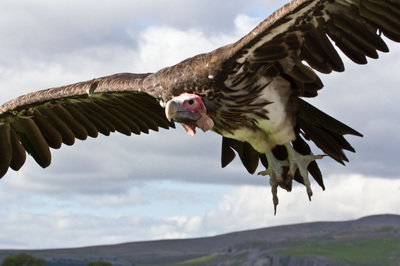

In addition, conflicts have arisen between those who provide carcasses for nature conservation reasons and other people in these localities. However, the benefits of this activity for the target species or the wider consequences for the other trophic levels and ecosystem functions are unclear. 2007 The Scottish Government 2011a John Muir Trust 2012) but it has also been used to benefit the wider scavenger communities and to promote nutrient cycling (John Muir Trust 2009 Cunningham 2010). This practice has been implemented predominately to benefit avian scavengers in many countries including Europe (Spain, France, and UK) and parts of Africa and Asia (Piper 2005 Gilbert et al. In order to reverse this trend, there has been an increase in the practice of deliberately leaving or placing out carcasses of domestic or wild herbivores with the aim of providing a source of supplementary food for scavengers. Furthermore, changes in Common Agricultural Policy (CAP) subsidies have led to a reduction in the number of domestic animals kept in the uplands throughout Europe (Scottish Agricultural College 2008), thus further reducing the availability of carrion to scavengers and the decline in carrion availability is exacerbated by changes in legislation relating to livestock health and disease which require any domestic animal that has died to be removed from the land in all but the most remote upland areas (Margalida et al. For example, wild herbivores such as deer are removed from the environment through either trophy hunting, population control or to provide meat for human consumption, thus few carcasses become available to scavengers from natural mortality (Whitfield et al. Management of both wild and domestic herbivores in many countries can enhance this problem. However, due to the loss of top predators from most ecosystems this regular supply of carrion is lost. In near natural systems (such as the Yellowstone National Park and the Bialowieza Primeval Forest), top predators provide a well dispersed and regular supply of partially consumed carcasses to scavengers, resulting in diverse scavenger communities (Wilmers et al. The latter can partially be attributed to the loss of top predators from many systems.

2006), as well as a reduction in the availability of carrion (Whitfield et al. This can be attributed to a number of causes which include habitat loss and fragmentation (Groom et al. Populations of some scavenger species have suffered declines across Europe (Whitfield et al. A greater knowledge of the impact of carcass provisioning and placement on ecosystems and society at large is required before it can become a more effective conservation tool at a wider scale. We conclude that expecting carcasses to simply be “good for biodiversity” may be too naïve a view. Moreover, conflicts between environmental policies that carcass provisioning is aimed at and other social and economic objectives do occur but these projects are often designed without taking into account this broader context. Evidence for the effectiveness of this practice in achieving these objectives, however, is mostly lacking, with ecologists studying “easier” species groups such as beetles and therefore not providing relevant insights. We show that the provision of carcasses is often motivated by a desire to benefit charismatic species or to facilitate nutrient cycling throughout an ecosystem. Here we bring out the key aspects of this increasingly common conservation practice illustrated using three contrasting cases studies. However, this can be a controversial practice, with as yet unclear outcomes for many target species and the ecosystems they are part of. In attempts to reverse their decline, some land and wildlife managers have adopted the practice of leaving or placing out carcasses of wild or domestic herbivores to provide a source of carrion.

A number of scavenger species have suffered population declines across Europe.


 0 kommentar(er)
0 kommentar(er)
